23 Mind-Blowing Facts About Turkeys You Definitely Didn’t Know
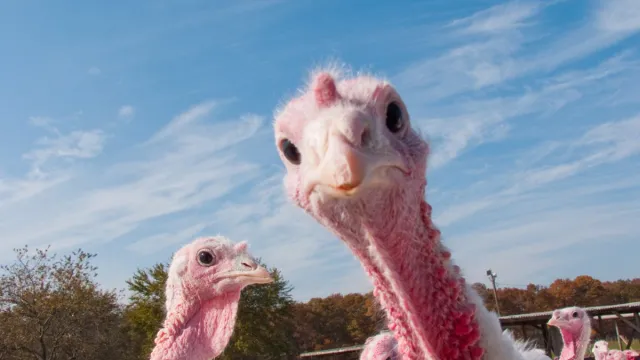
Every year, families across America enjoy a traditional turkey dinner as a part of their Thanksgiving celebrations. But how much do we really know about the quirky birds that serve as the centerpiece of our festive meal? From the silly sounds they make—spoiler alert: they do more than just gobble—to their impressive hearing, there are plenty of amazing turkey facts that are sure to impress. And if you want more turkey-related content, check out the 25 Hilarious Turkey Jokes You’ll Eat Right Up.
Read the original article on Best Life.
1
Female turkeys don’t gobble, but they do purr.
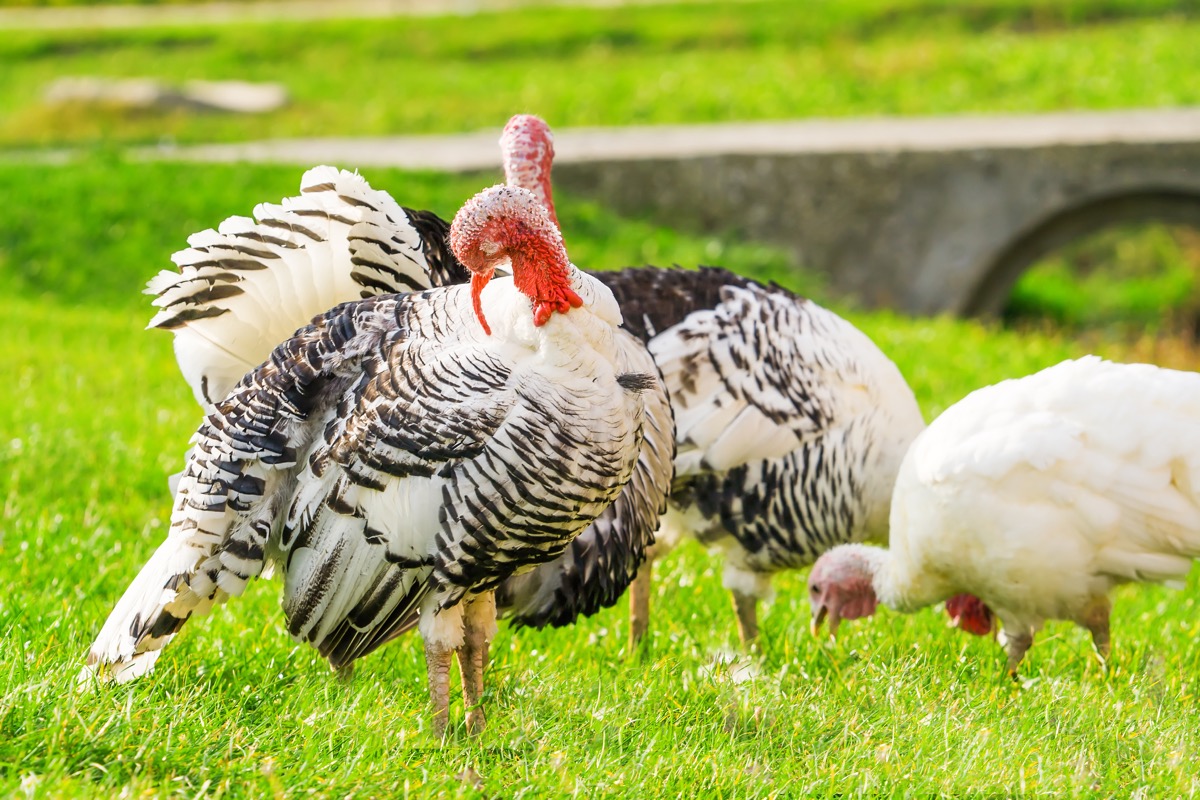
Turkeys are known for the gobbling sound they make, but it turns out that only the male birds make that iconic call. Female turkeys—or hens—on the other hand, will instead cluck like a chicken, yelp if they’re excited or agitated, or purr like a cat (although, according to the National Wild Turkey Federation, it’s more of a “rolling, almost staccato call” than a purr, but it conveys the same feeling of contentment). And to bust some Thanksgiving-related myths, check out 8 Common Myths About Thanksgiving You Probably Still Believe.
2
Turkeys were once primarily bred for their feathers, not their meat.
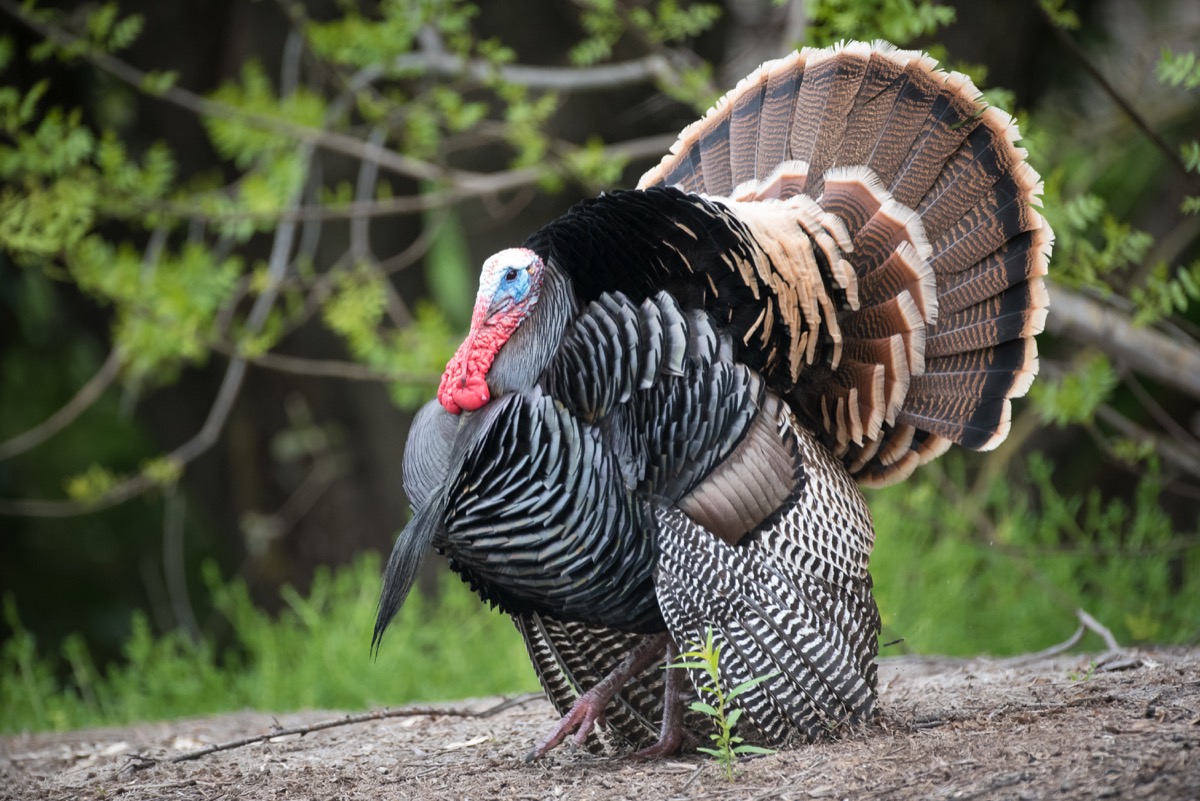
These days, farmers breed turkeys in order to sell them for their meat. But, according to Encyclopedia Britannica, up until 1935, the birds were bred for their “beautifully colored plumage,” which features stunning striped patterns.
3
An adult turkey has around 5,000 to 6,000 feathers.
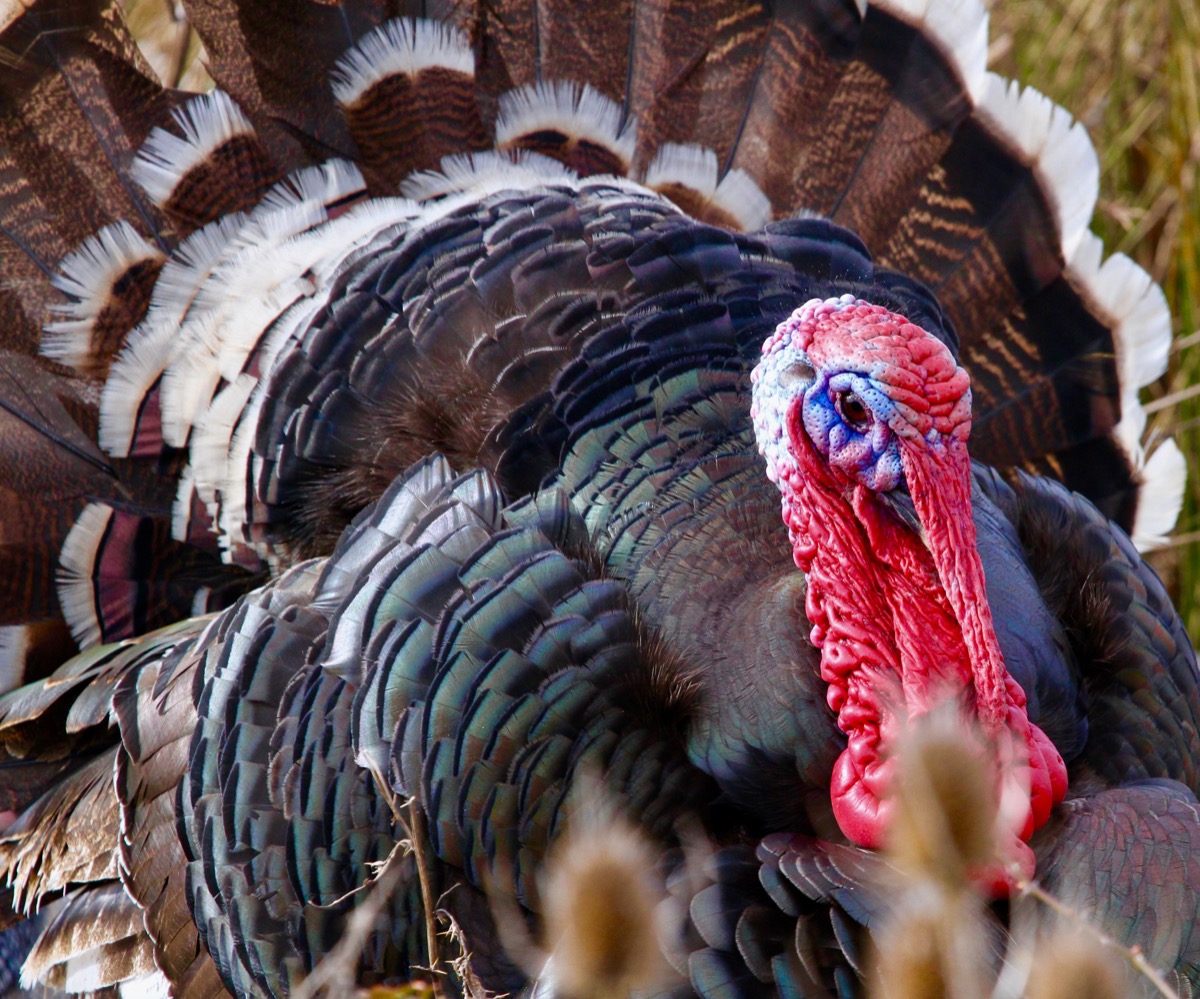
Not only do turkeys have gorgeous feathers, but they also have a lot of them. According to the U.S. Fish and Wild Life Service, an adult turkey has anywhere from 5,000 to 6,000 individual feathers on their body.
4
Male turkeys are called toms or gobblers.
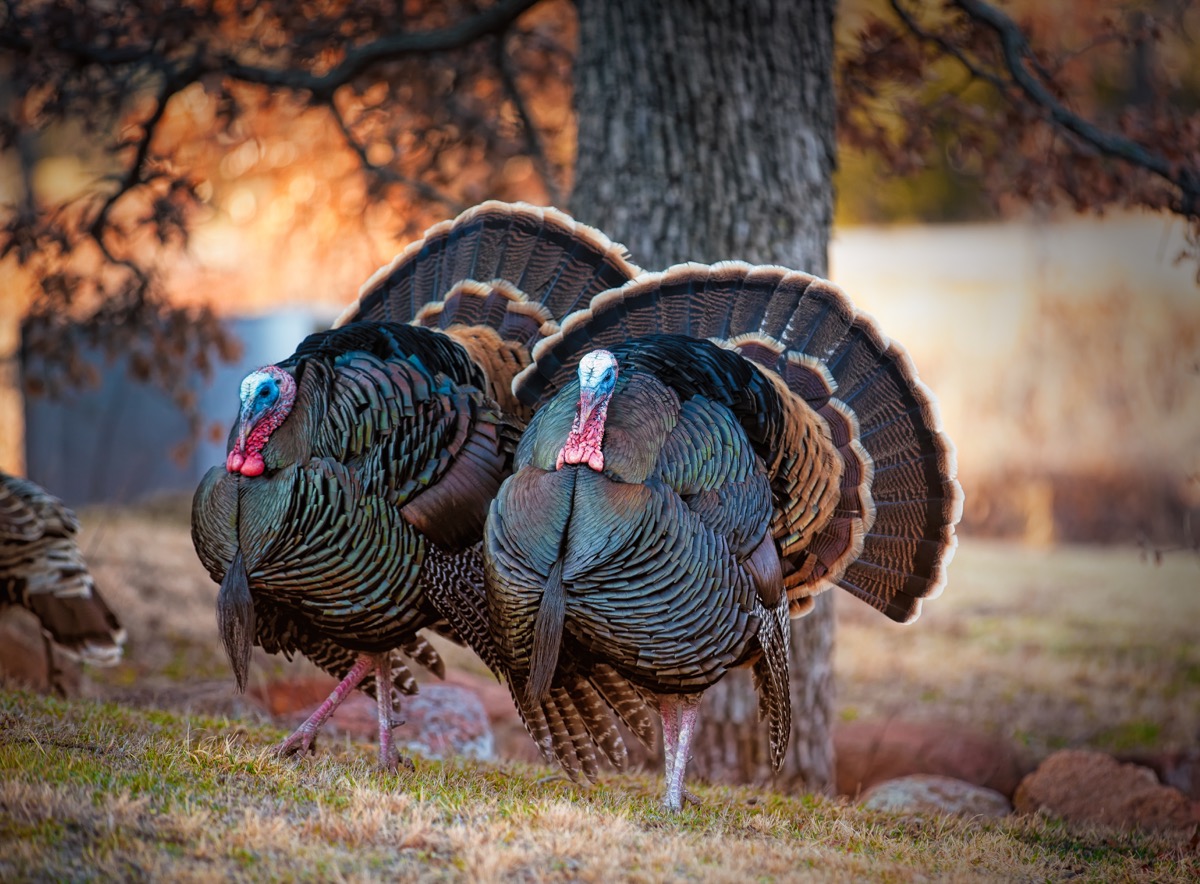
Female turkeys are called hens, just like female chickens; but male turkeys aren’t roosters. Instead, they’re called toms, or, since male turkeys are the ones who make the notorious gobbling sound, they can also be called gobblers. And if you ever wondered why we call them turkeys, check out This Is How Turkeys Got Their Name.
5
Toms have more warts than hens.
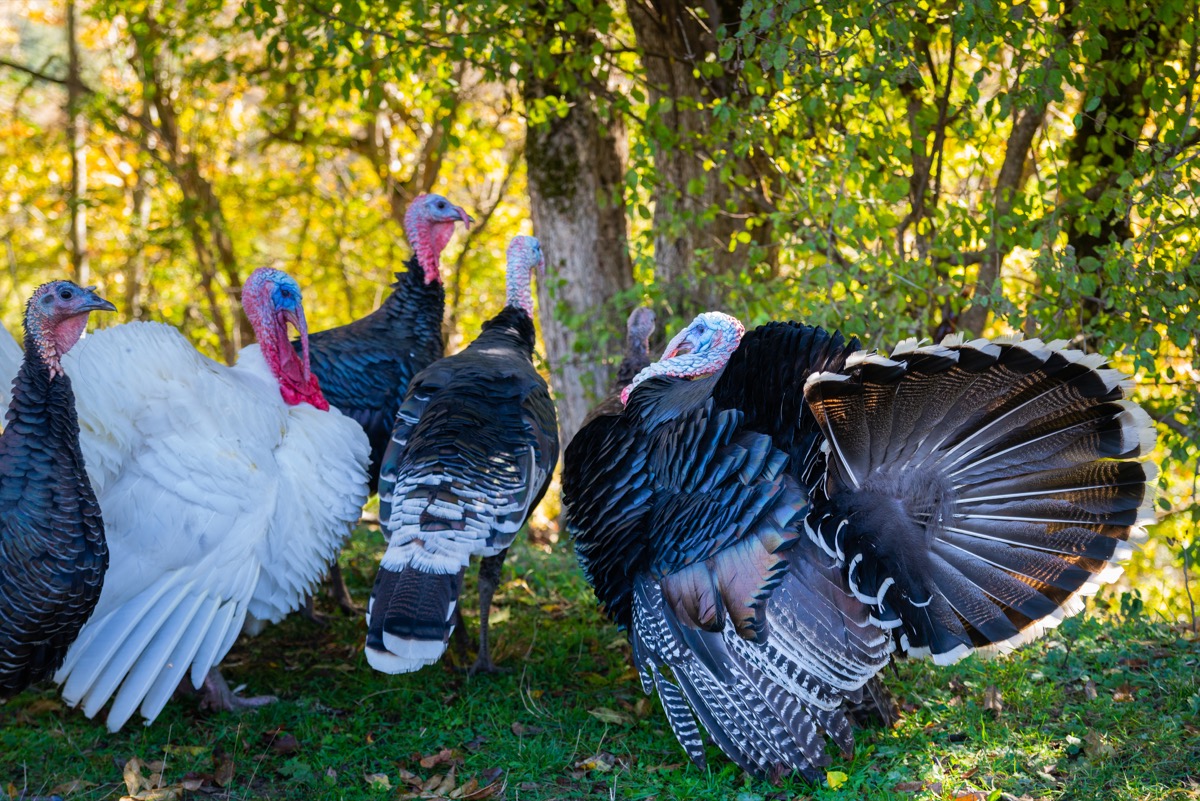
While some of the differences between male and female turkeys could be considered endearing—such as the noises they make and the names they’ve been given—there’s at least one difference between the two genders that isn’t quite so cute. Tom turkeys have more warts on their heads than their lady friends, according to Encyclopedia Britannica. Hens also weigh about half as much as their male counterparts.
6
Male and female turkey droppings are shaped differently.
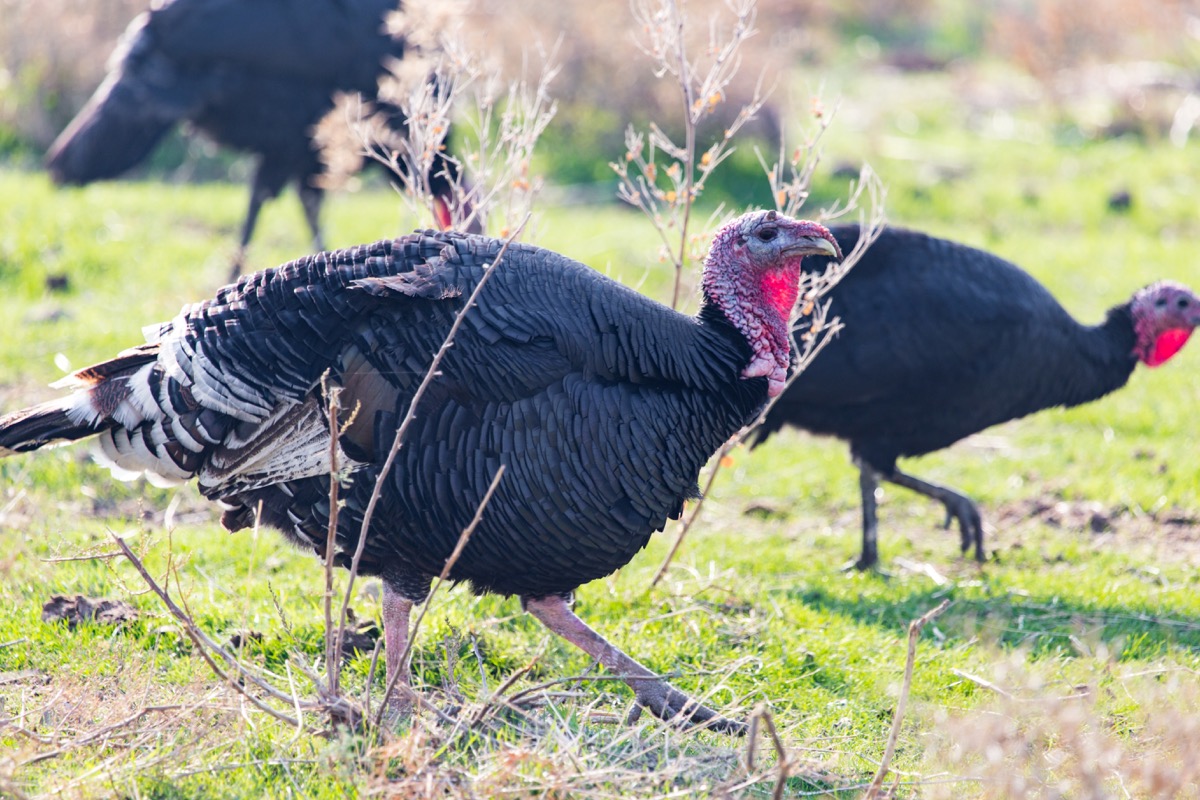
Although you might expect there to be a few differences between the way male and female turkeys look, you might be surprised to find out that there’s also a difference when it comes to their bathroom habits. According to the Pennsylvania Game Commission, male droppings are “j-shaped,” while those of females take on a more “spiral or curlycue” shape.
7
Turkeys hear certain sounds better than humans.
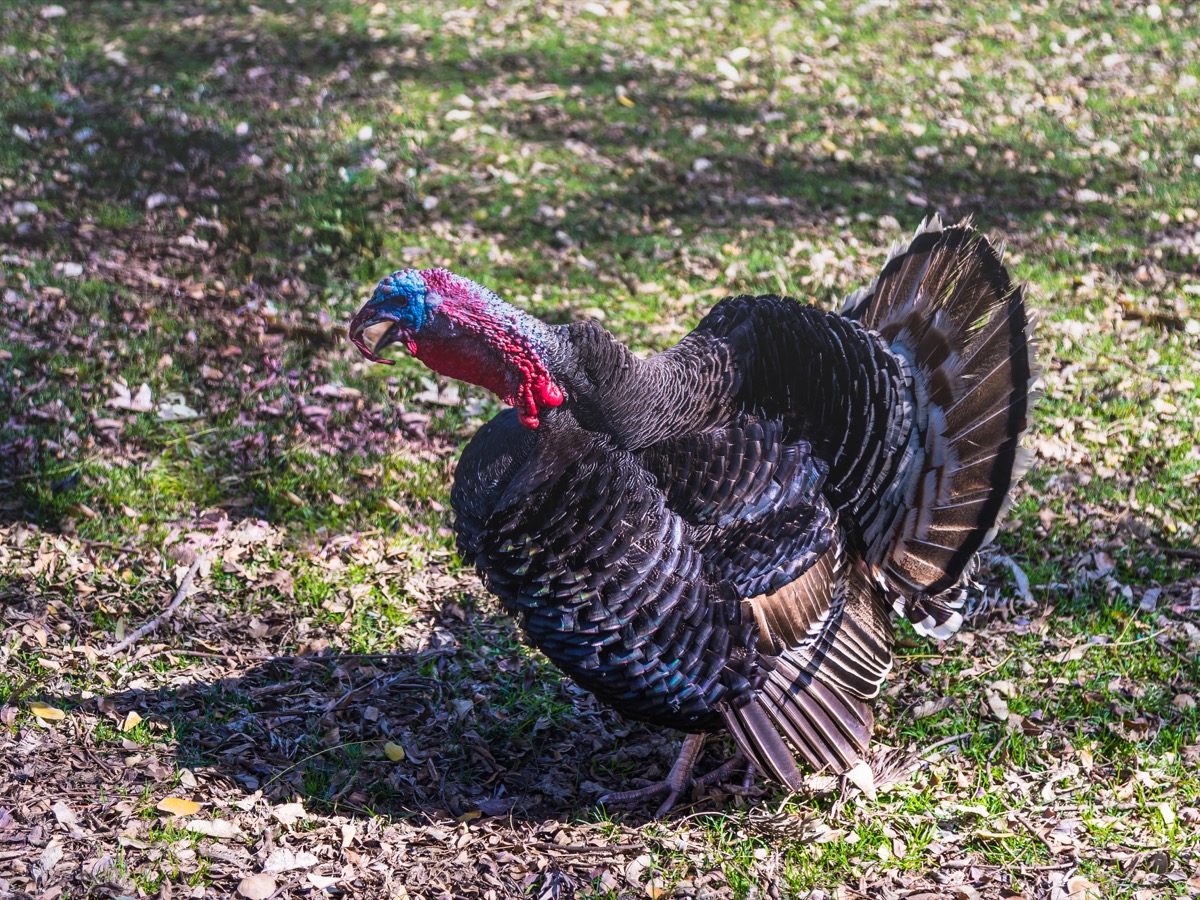
When you think about animals with amazing hearing, dogs, elephants, bats, or owls likely come to mind, but probably not turkeys. It turns out, however, turkeys can actually hear far-off and low-frequency sounds better than humans, according to the National Wild Turkey Federation. “Hearing allows the bird to detect a threat if its eyes are occupied on finding food,” retired regional biologist Bob Eriksen for the NWTF explains. “Wild turkeys have an uncanny ability to locate the source of a sound.” And for more fun facts about mother nature, check out 75 Animal Facts That Will Change the Way You View the Animal Kingdom.
8
Turkeys lived around 10 million years ago.
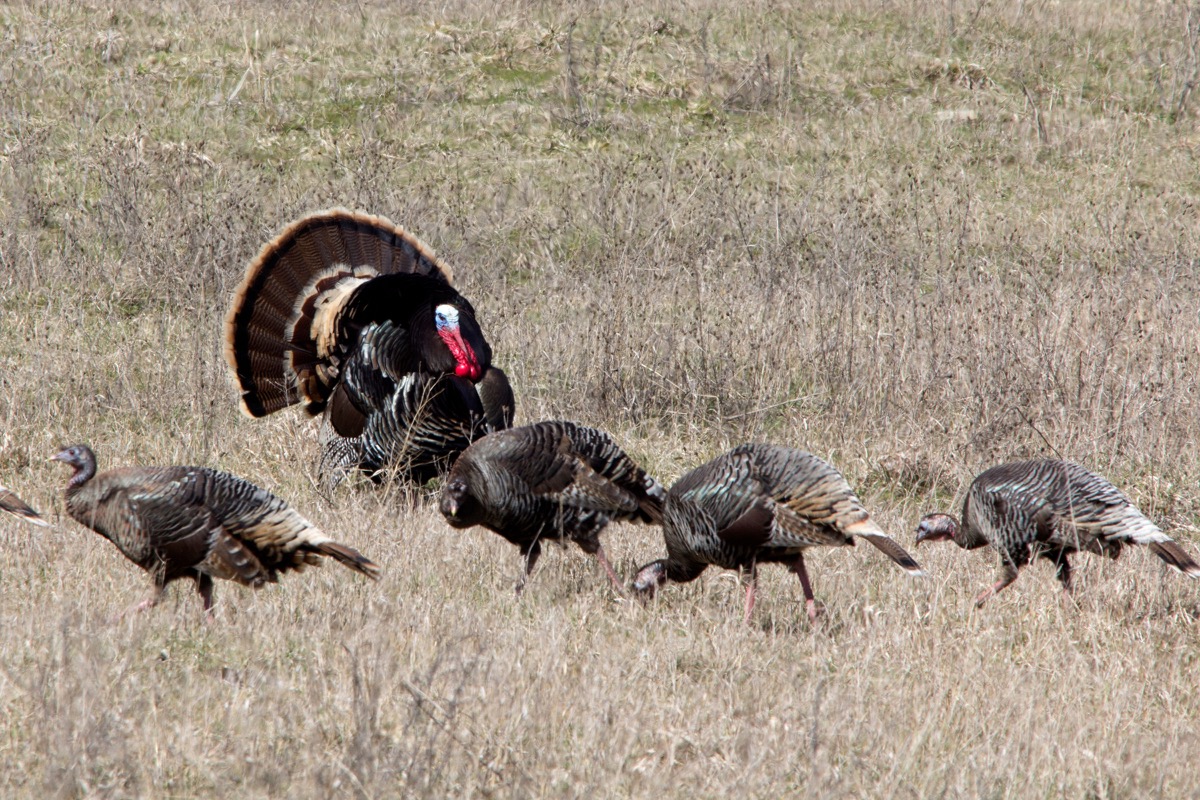
The woolly mammoth had its hey-day on Earth until about 10,500 years ago before eventually becoming extinct 4,000 years ago. While it’s hard to imagine a turkey flying above a gigantic woolly mammoth, the birds have actually been around for a lot longer. In fact, turkeys have been on the scene for almost 10 million years, according to the University of Illinois.
9
Turkeys almost went extinct—twice.
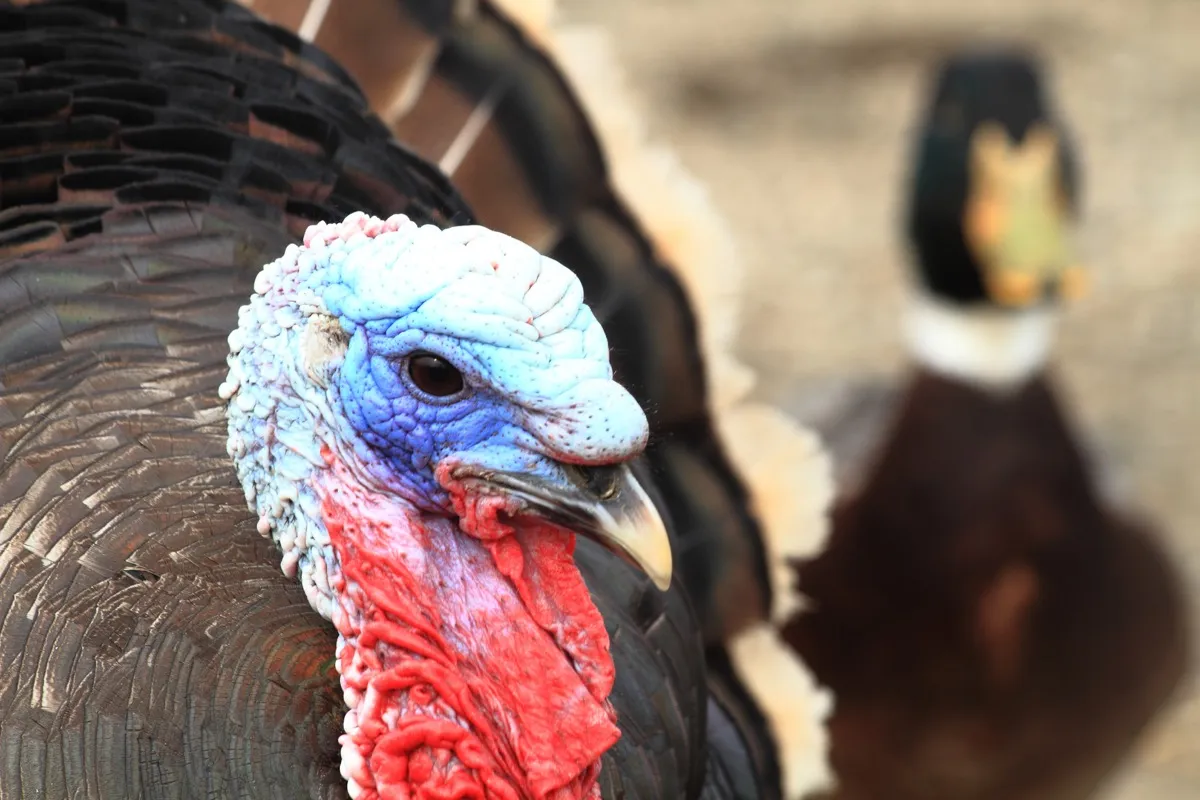
While turkeys aren’t currently an endangered species, there were two points in the past when we almost lost them completely. According to the Colorado Arts and Sciences Magazine, the California turkey went extinct about 10,000 to 12,000 years ago, likely due to climate change or overhunting, or a combination of the two. And when European settlers arrived in America, turkeys again found themselves as targets of prolific hunting. The birds were totally gone from Connecticut by 1813, disappeared from Vermont around 1842, and by the 1930s, turkeys were again growing dangerously close to extinction before efforts were taken to make sure they weren’t wiped out. And for more animals at risk of extinction, Here Are All the Endangered Species in the World.
10
Turkeys once wore booties while being walked to the market.
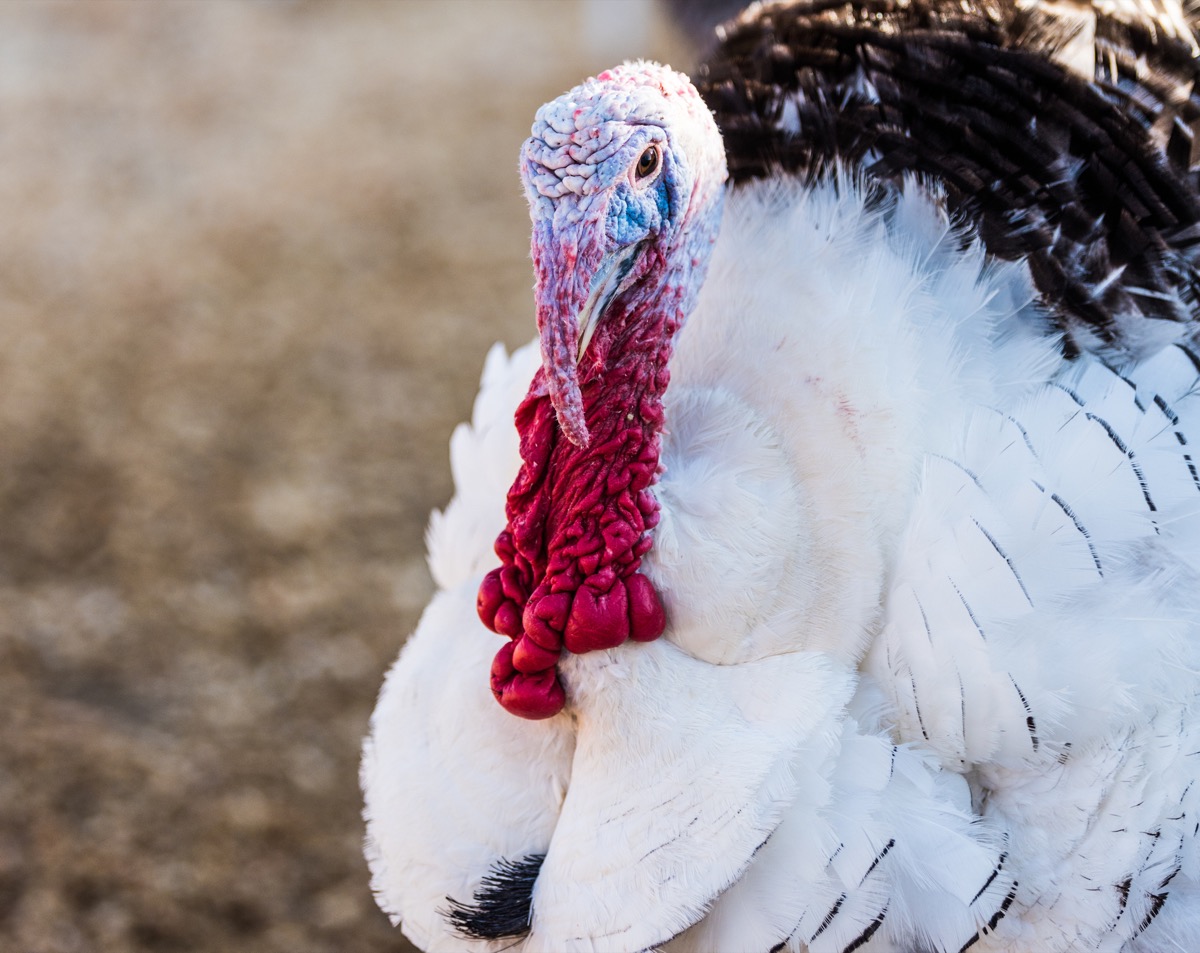
As they say, these boots were made for walking and that’s just what a herd of turkeys would do 200 years ago when they were being taken to market in England. The little bird-sized booties were meant to protect their feet as they were marching along, according to the University of Illinois.
11
Turkeys were named after the “Turkish” area despite being from North America.
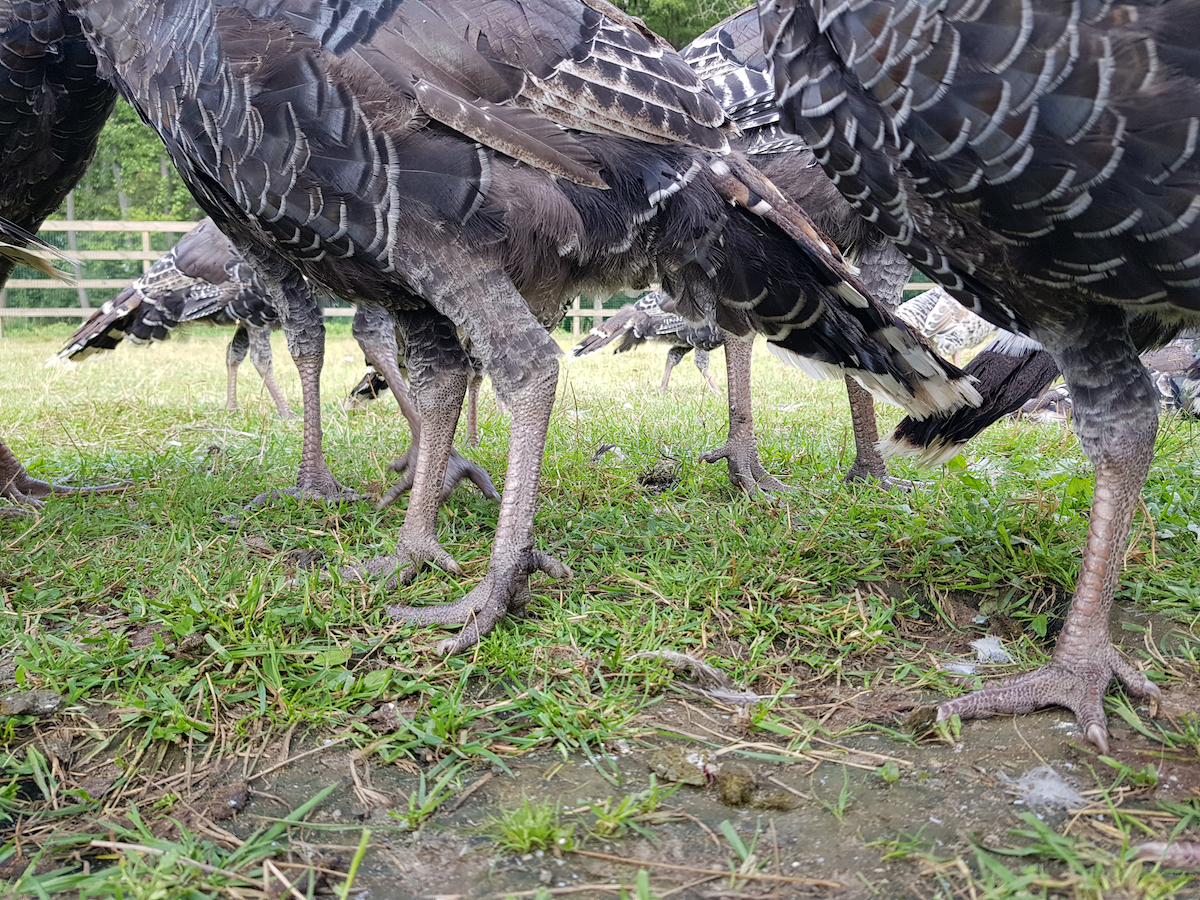
You might have wondered why turkeys have the name that they do despite the fact that they originated in North America. Encyclopedia Britannica explains that when the bird became popular in England, the name turkey-cock, formerly used for the guinea fowl found in Islamic (or “Turkish”) lands, was used to refer to the bird we know as a turkey today.
12
All but 12 U.S. states have turkeys.
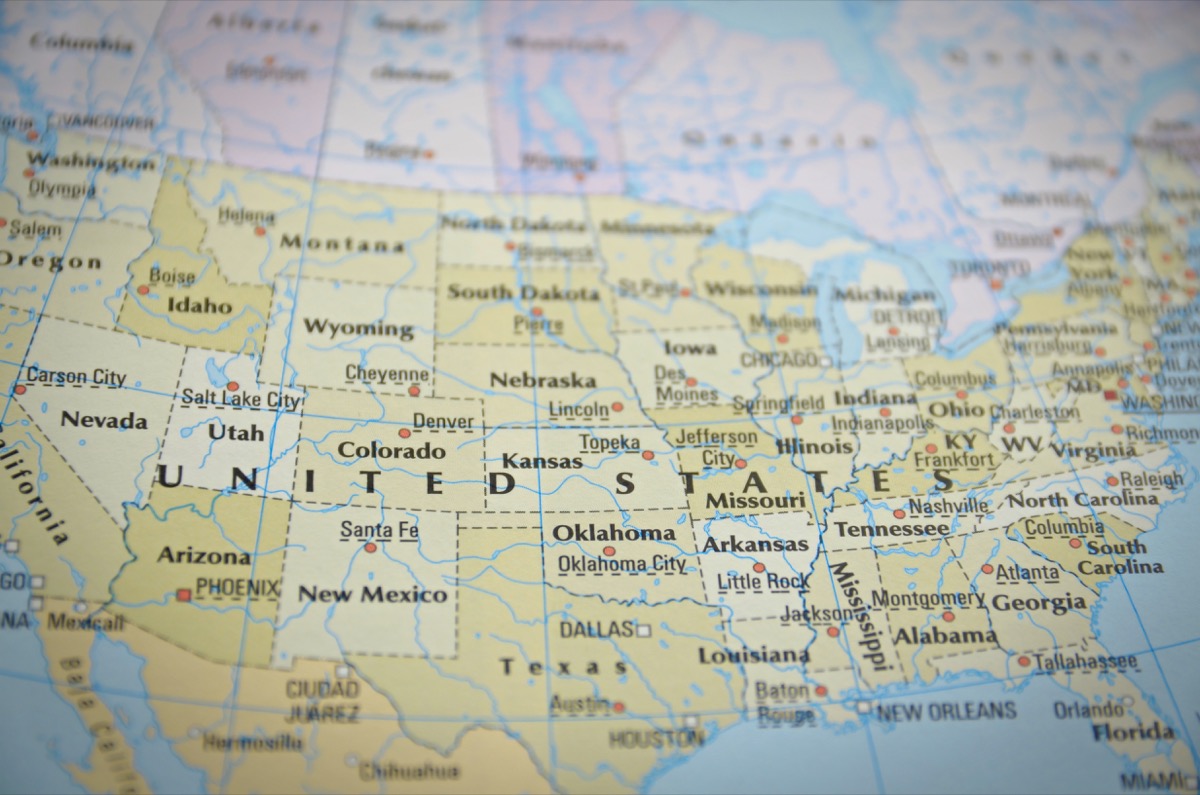
While people in all 50 states enjoy turkey as a part of their Thanksgiving dinners, the birds, specifically Eastern wild turkeys, can be found roaming wild in 38 states in the U.S., according to the National Wild Turkey Federation. They can also be spotted in various provinces up in Canada.
13
Turkey beards grow three to five inches per year.
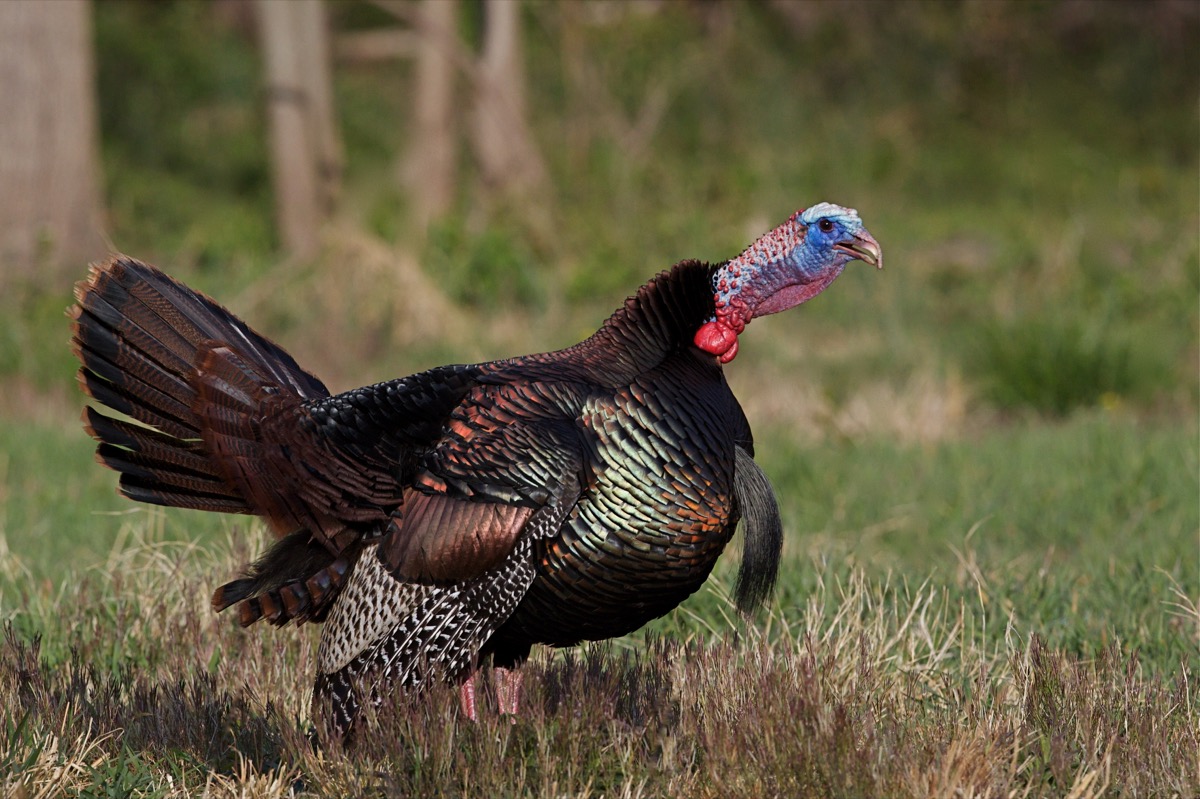
Yes, turkeys have beards, but they aren’t made of hair. Instead, turkey beards consist of modified feathers that form bristles or filaments, according to the Pennsylvania Game Commission. Some turkeys even have multiple beards that can each grow up to three to five inches each year.
14
Turkeys can—and will—attack humans.
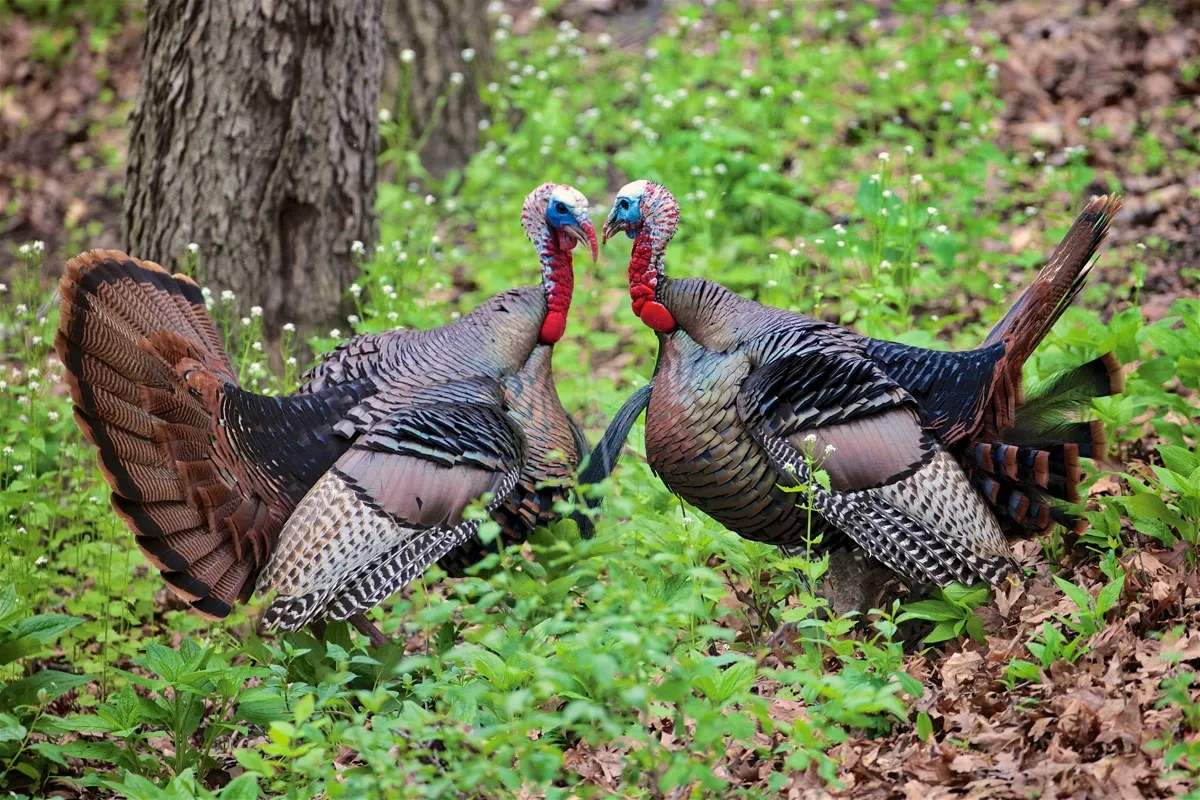
Turkeys may not have the fierce reputation that some fang-gnashing, claw-showing predators have earned, but that doesn’t mean that they don’t have an aggressive side. In fact, turkeys are fully willing and able to attack humans. That’s why the Massachusetts government provides tips on how to prevent conflicts with turkeys while both CBS Boston and Good Day Sacramento offer insights into what to do should you find yourself as a victim of a turkey attack. And for the most dangerous creature of all, find out why The Deadliest Animal to Humans in the World Will Shock You.
15
Store-bought turkeys can’t fly.
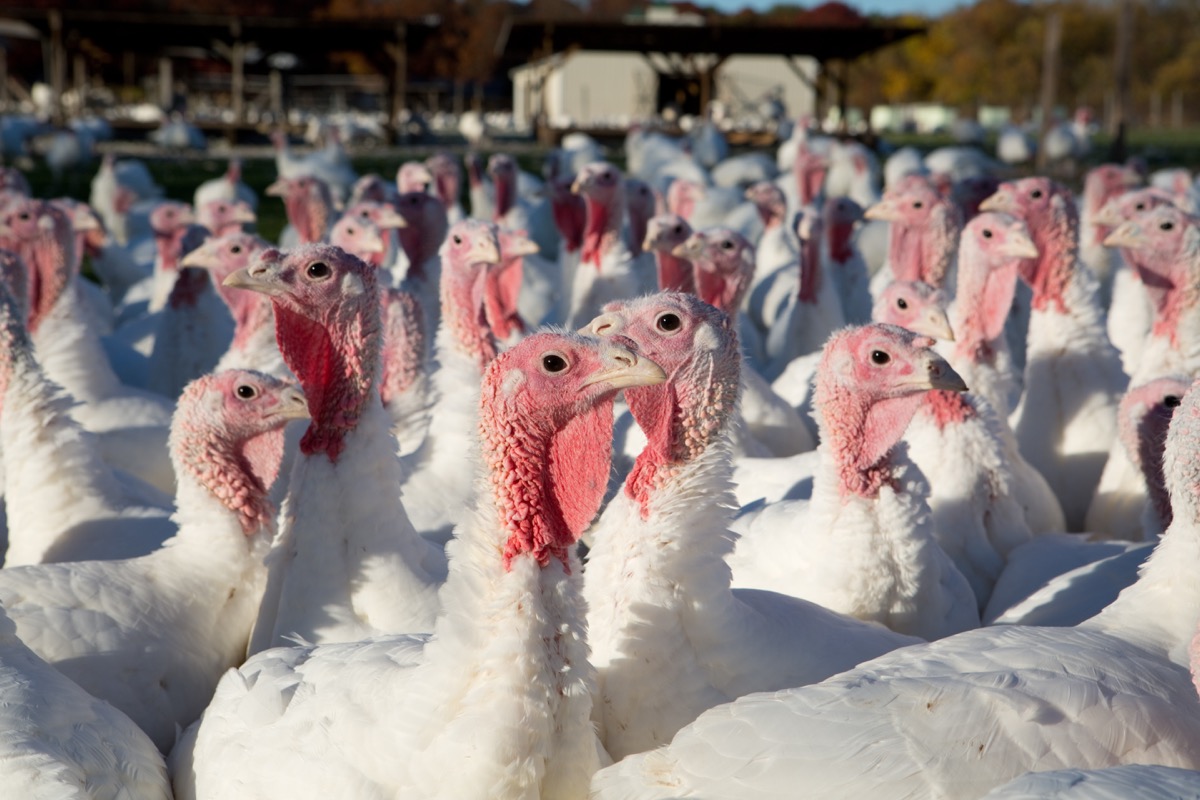
The turkey that you buy at the grocery store has been bred and raised to provide you with as much meat as possible. Because of this, they end up with unnaturally large breasts which hinder their ability to fly, according to The Patriot News.
16
Wild turkeys, however, can soar for over a mile.
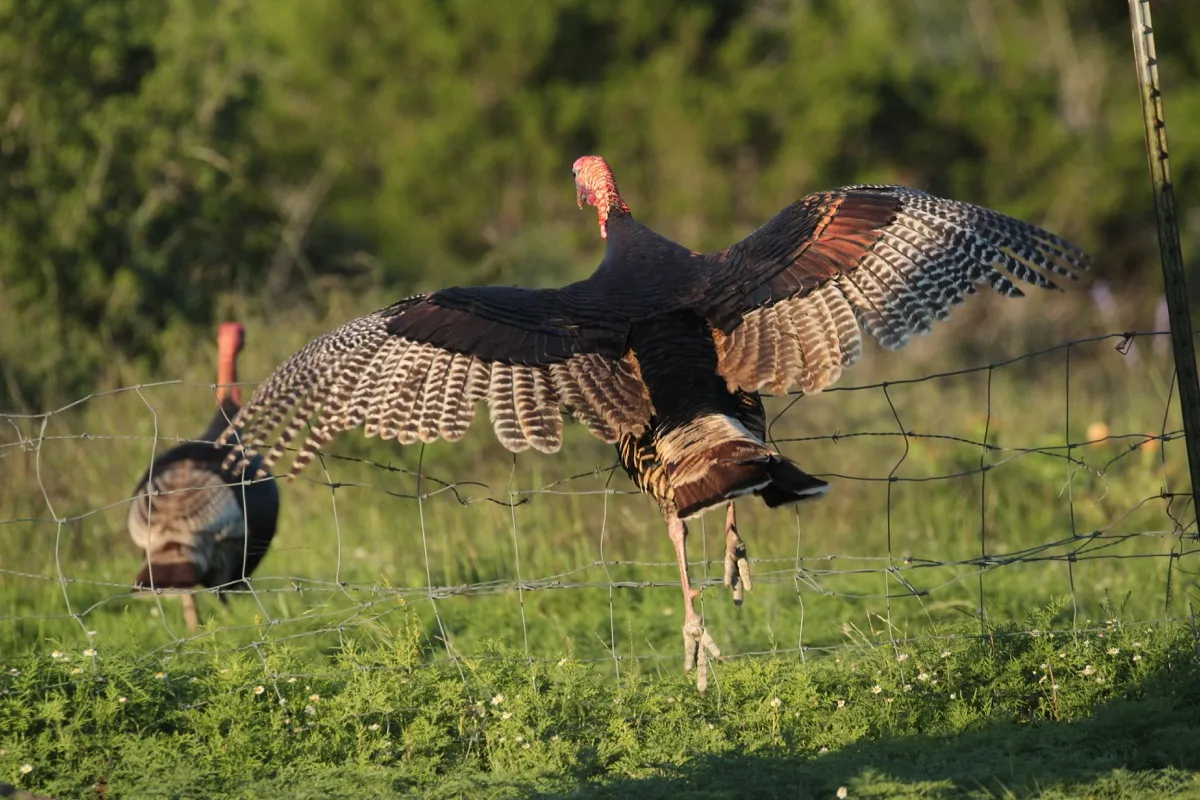
Wild turkeys, on the other hand, are perfectly capable of taking flight. In fact, according to The Patriot News, they can reach speeds of up to 55 miles per hour while in the air. And the Pennsylvania Game Commission reports they can soar for a mile or more by alternating between strong wingbeats and gliding.
17
Turkeys can run 12 miles per hour.
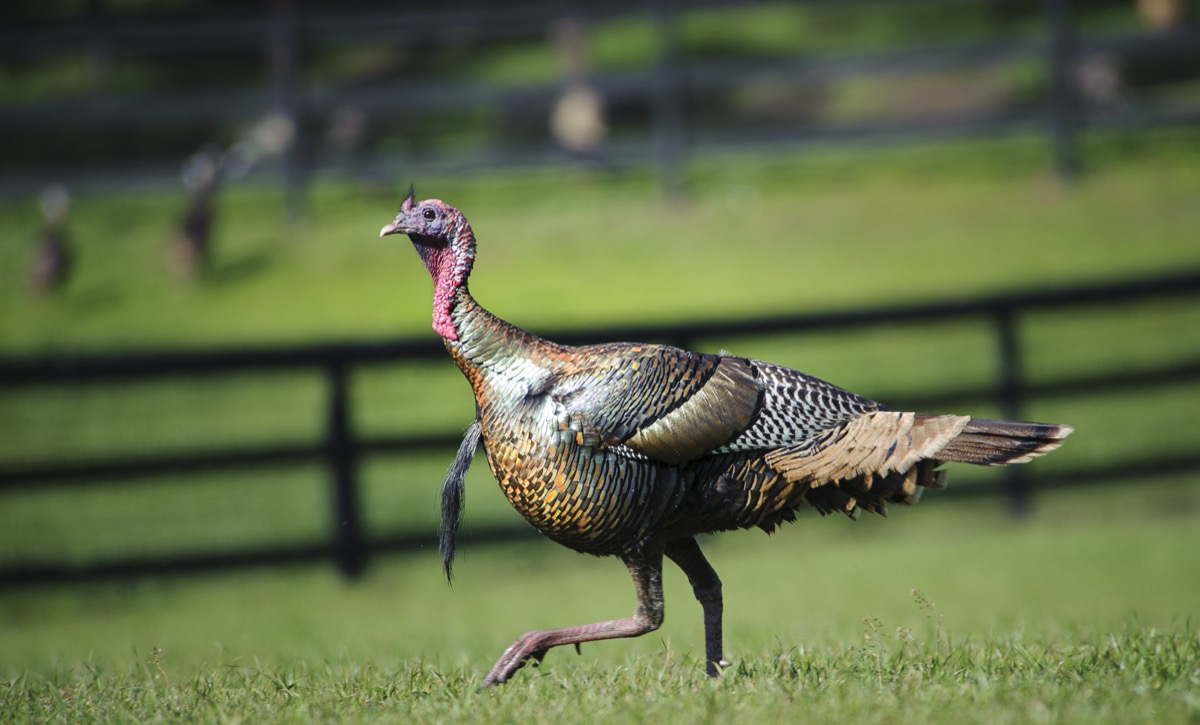
Some turkeys may not be able to fly, but their inability to get airborne doesn’t completely slow them down. Even while on the ground, they can still move at a pretty good clip, running upwards of 12 miles an hour, according to the Pennsylvania Game Commission.
18
Frying a turkey can lead to an explosion.
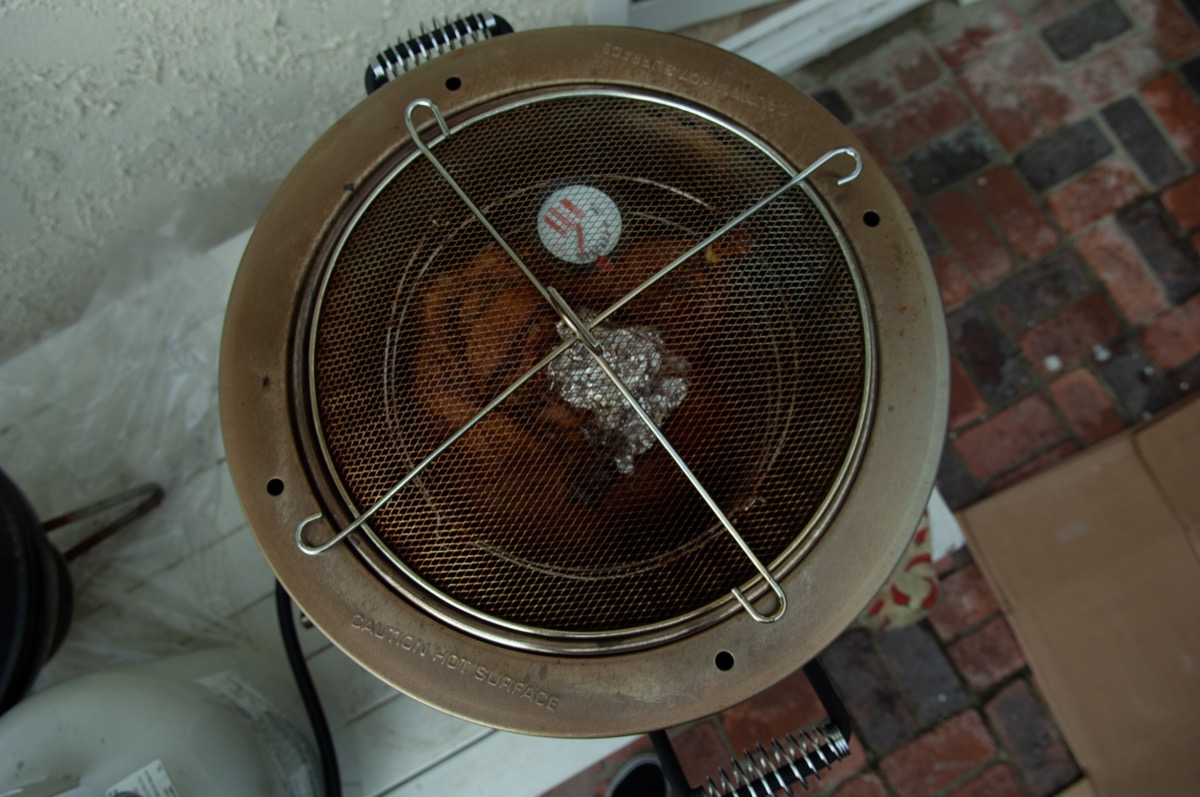
In 2018, firefighters across the country conducted demonstrations to show the public how attempting to fry the main dish for a Thanksgiving dinner can result in what IFL Science refers to as “exploding turkeys.” In videos posted to social media of these fowl-fueled infernos, flames blast up into the air when a turkey is dropped into hot oil.
19
Turkeys have more than doubled in size in the last 40 years.
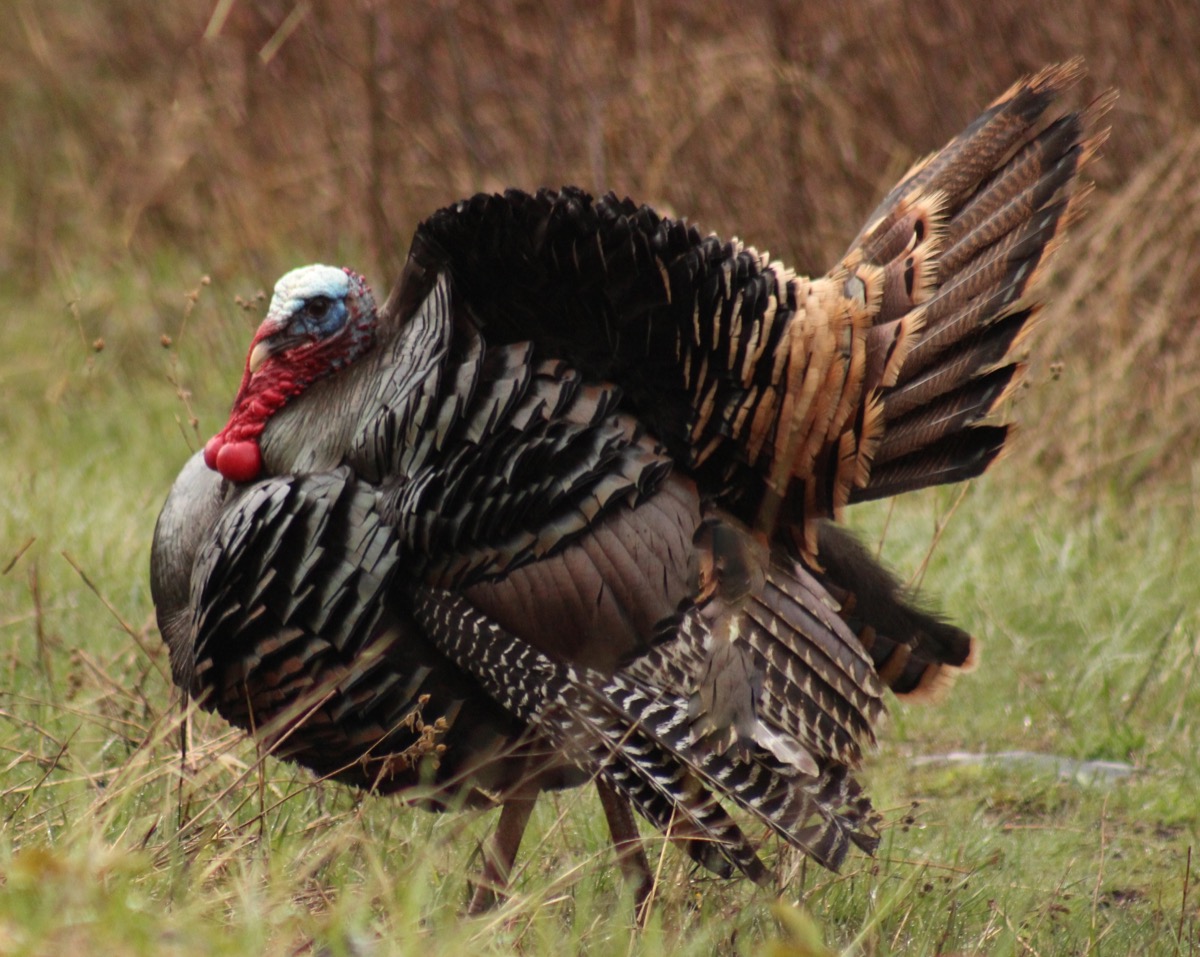
If you’re able to feed your entire family with one turkey at Thanksgiving, that’s due to the fact that the birds have gotten much bigger over the years. As recently as 1980, the typical U.S. domesticated turkey weighed less than 19 pounds at slaughter—not much bigger than a wild turkey, according to the Pew Research Center. But nowadays, the average bird we carve up on Thanksgiving weighs 29.8 pounds, more than twice the average weight nearly 40 years ago.
20
We eat nearly 50 million turkeys each Thanksgiving.
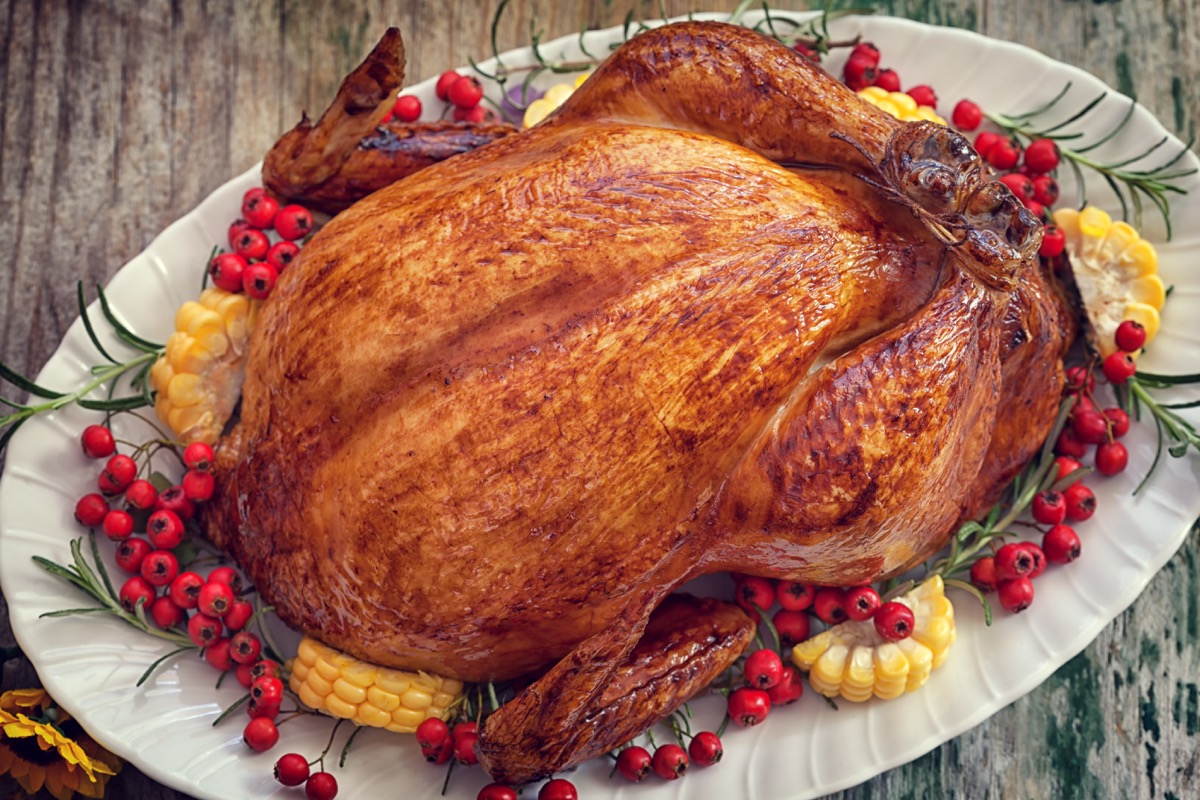
Around 88 percent of Americans choose the traditional bird for their Thanksgiving meal, which means that around 46 million turkeys are eaten in the U.S. on that one day each year, according to the University of Illinois. It’s also a popular pick for other holidays as well, with 22 million and 19 million eaten each year on Christmas and Easter, respectively.
21
The average American eats 104.9 pounds of turkey every year.
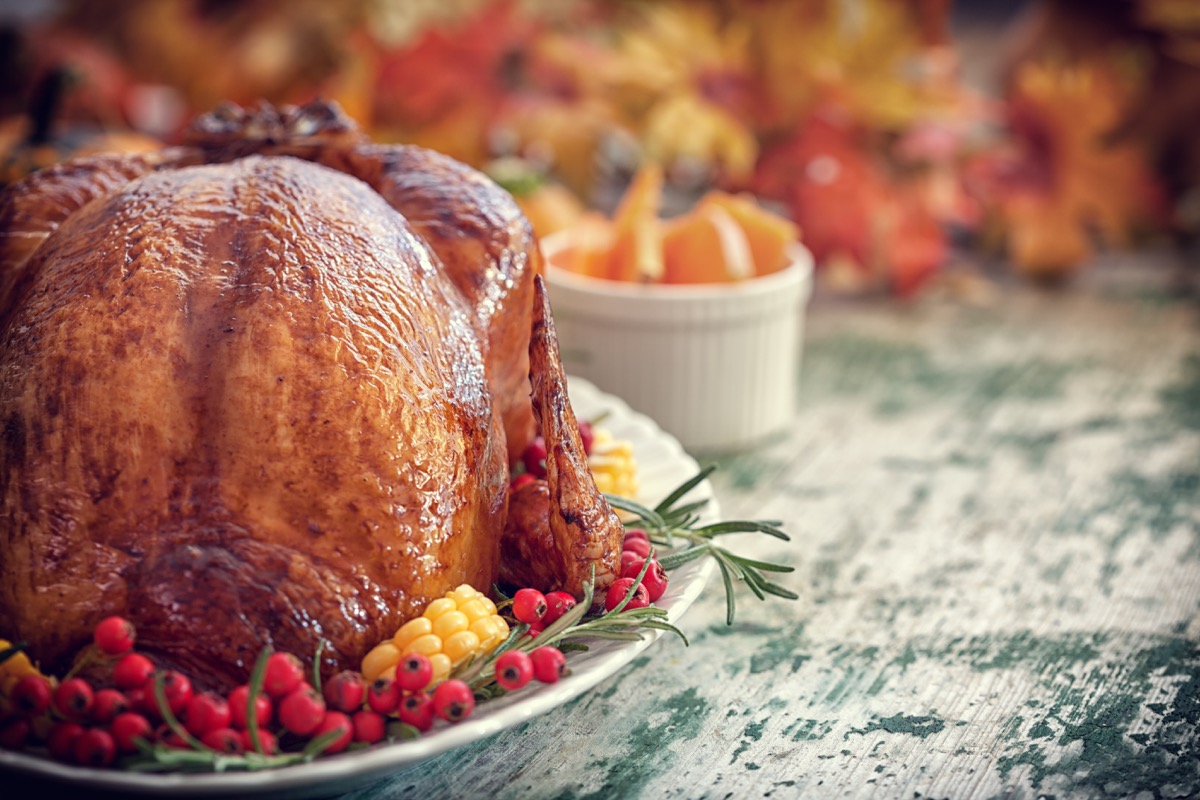
Along with eating turkeys on Thanksgiving, Christmas, and Easter, Americans also enjoy the bird’s meat throughout the rest of the year in sandwiches, soups, and a range of other dishes. And according to 2015 data from U.S. News and World Report, the average U.S. citizen eats nearly 105 pounds of turkey annually.
22
Nearly 229 million turkeys were produced in the U.S. last year.
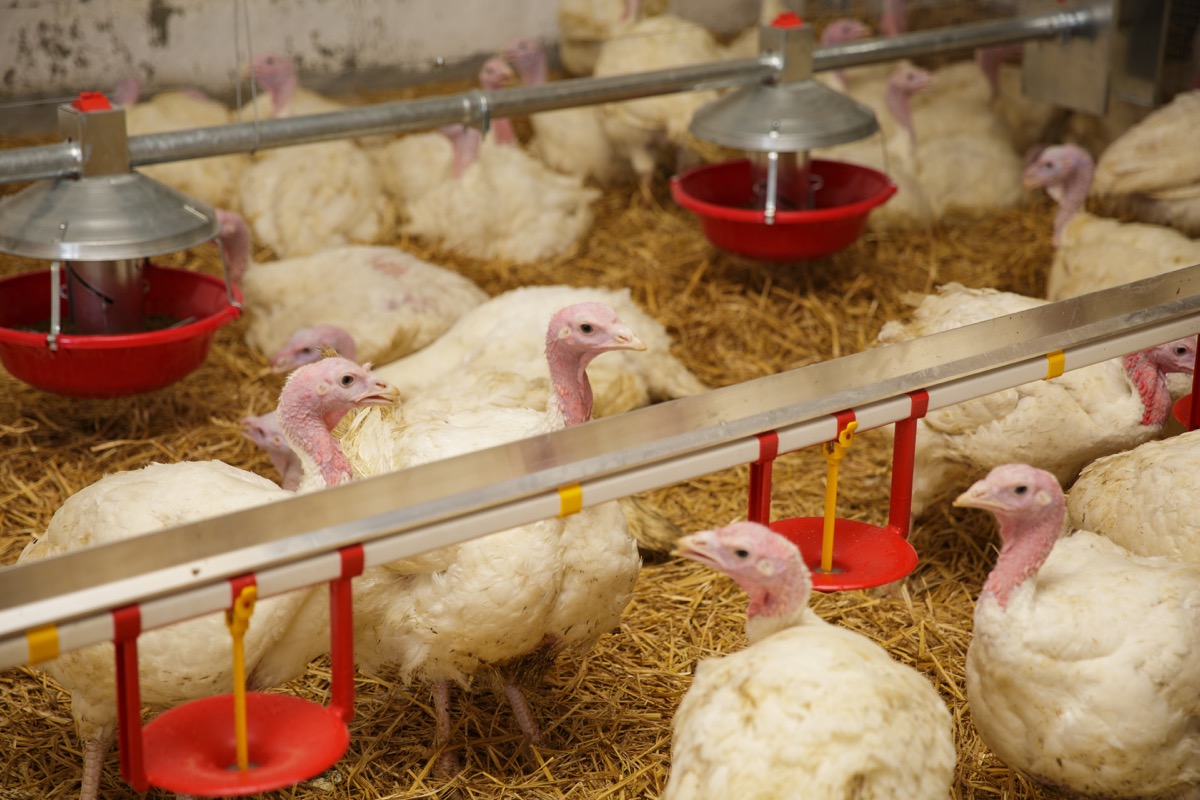
There are more than 330 million people in the United States. And in 2019 alone, 229 million turkeys were produced across the country, according to the National Agricultural Statistics Service. Soon they might overtake us!
23
The world record for the fastest turkey carving is 3 minutes and 19.47 seconds.
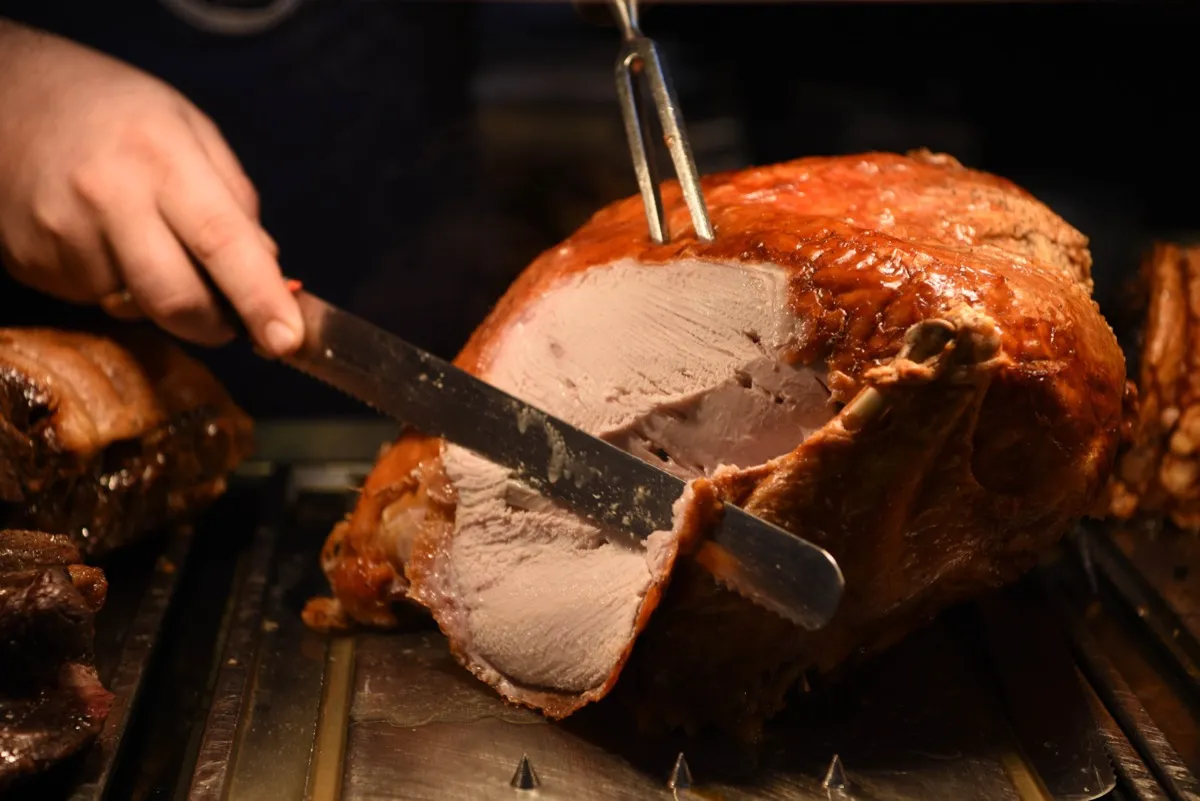
On June 3, 2009, the U.K.’s Paul Kelly set the Guinness World Record for the fastest time to carve a turkey. He was able to successfully butcher the bird in just 3 minutes and 19.47 seconds. And for more on how those outside the U.S. view Turkey Day, get ready to laugh at these 10 Things People Outside of the U.S. Can’t Believe About Thanksgiving.